
History
The story of the Grumman A-6 Intruderstarted in 1956 when the US Navy requested a proposal from Boeing, Lockheed, Bell, Grumman, Douglas, Martin, Vought and North American for a two-seat, subsonic attack bomber. The Navy preferred a side-by-side seating configuration, as this would balance the workload in the cockpit and afford better communication between the pilot and flight officer-bombardier. Grumman won the contract and construction began in 1958. The A6 Intruder was a notoriously unflattering airframe. The Pratt & Whitney turbojets required twin intakes toward the front of the aircraft in a bifurcated style which created large bulges, giving the A-6 a rather un-aerodynamic look which made it look like it was in a gravid state, if it was an organic being! To add insult to injury, a refueling probe stuck out from the nose and was bent forwards making it look like a bug’s antenna. Some naval aviators referred to the A-6 Intruder as “The Flying Drumstick”. Pretty is, as Pretty does, and don’t let looks deceive you about the effectiveness of this airframe. The A-6 Intruder’s avionics system was ahead of its time, its bombing prowess was immediately noticed, and its side-by-side seating arrangement created a unique sense of communication and afforded aviator bonding that other airframes lacked. This was critical in the upcoming mission that the A-6 was to endeavor to achieve!
The U.S. Navy experienced a need in the Korean War for a longer ranged strike aircraft with an aerodynamic subsonic performance envelope for low altitude ground attacks. This would be an all-weather airframe that could be employed to eradicate both soft and hard ground targets. Grumman designed the A-6 Intruder with this as its primary mission. The prototype Intruder flew in 1960 and the U.S.
Esta historia es de la edición February 2020 de Scale Aircraft Modelling.
Comience su prueba gratuita de Magzter GOLD de 7 días para acceder a miles de historias premium seleccionadas y a más de 9,000 revistas y periódicos.
Ya eres suscriptor ? Conectar
Esta historia es de la edición February 2020 de Scale Aircraft Modelling.
Comience su prueba gratuita de Magzter GOLD de 7 días para acceder a miles de historias premium seleccionadas y a más de 9,000 revistas y periódicos.
Ya eres suscriptor? Conectar
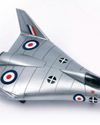
Mustard
BAC's Low Speed Research Vehicle

KOVOZAVODY PROSTEJOV (KP) 1 Was Monty's Triple'
Brian Derbyshire

SPECIAL HOBBY SAAB J-21A Review
From the late 1930s and early 1940s, with thewar in Europe raging around them andedging ever closer to its borders, the Flygvapnet had ordered Seversky P-35A aircraft, alongside Vultee Vanguards, but only sixty of the former and none of the latter were received.
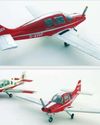
VFR MODELS Beagle B.121 Pup
This is the first 3D printed kit I have come across and it is really rather fine.

Hearts in the sky RIAT RETURNS
After a nearly three-year hiatus RIAT returned to our skies with a hot show in every sense of the word. SAM’s Mike Verier and Ray Ball were there.

Colour Conundrum
A Cancellation Conundrum - The RAF F-111s That Might Have Been Part 1

COPPER CAUDRON Caudron G.Ill in 1/32
Copper State Models have carved a name for themselves in the last few years producing high quality plastic kits of World War One subjects.
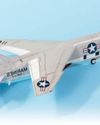
Academy RF-8A Crusader Conversion in 1/72
USMC squadron VMCJ-2 used six RF-8As during the Crisis (designation F8U-1P until September 1962), with others held in reserve, two flying out of Guantanamo Bay, and four out of NAS Key West.
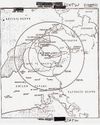
The Cuban Missile Crisis
Modelling US reconnaissance assets in 1/72 Part 2: The Nuclear Confrontation
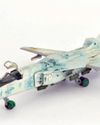
UKRAINIAT striker
The Sukhoi Su-24 is an all-weather attack aircraft capable of supersonic speeds and characterised by its side-by-side pilot/navigator seating and its variable geometry wing.